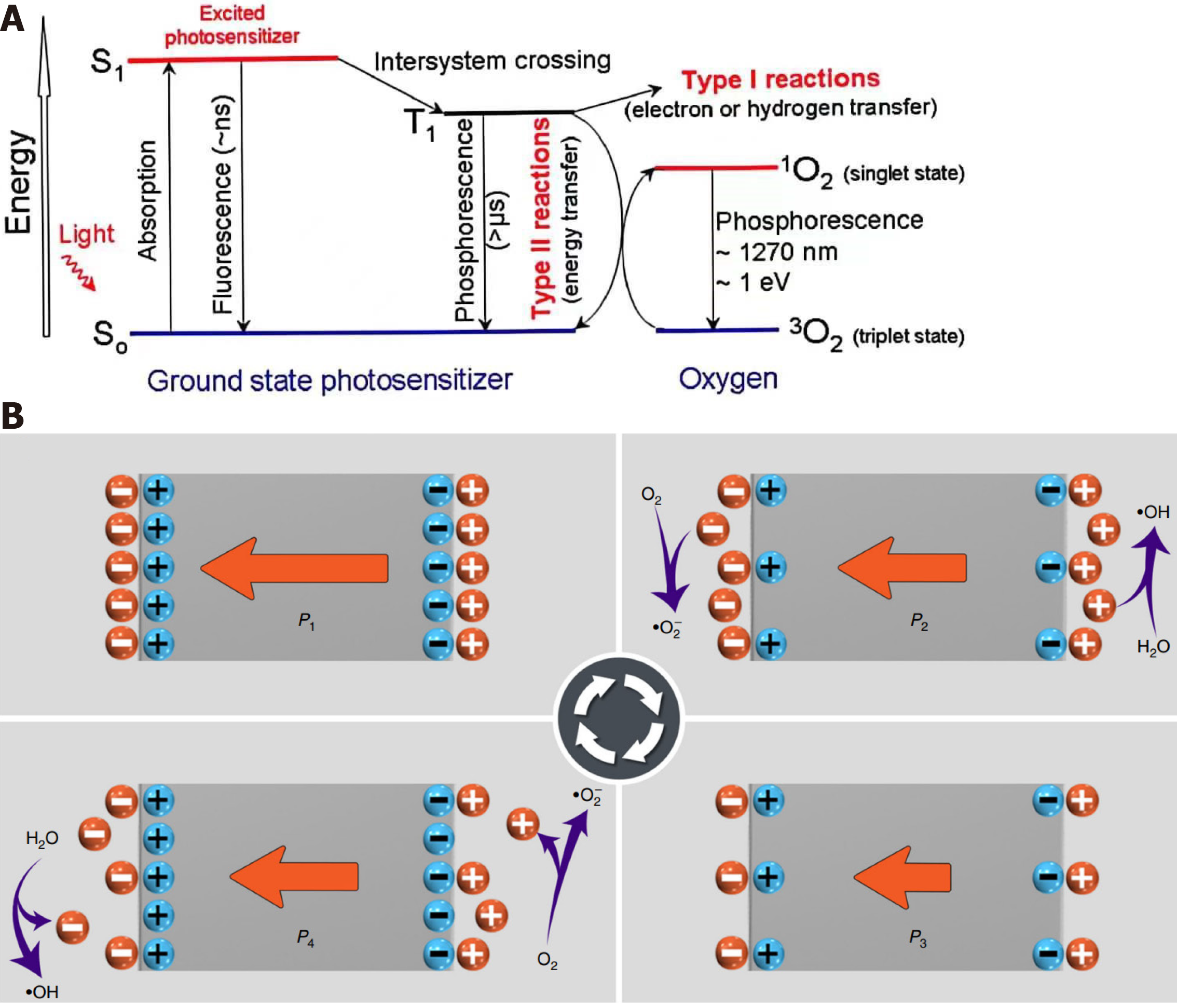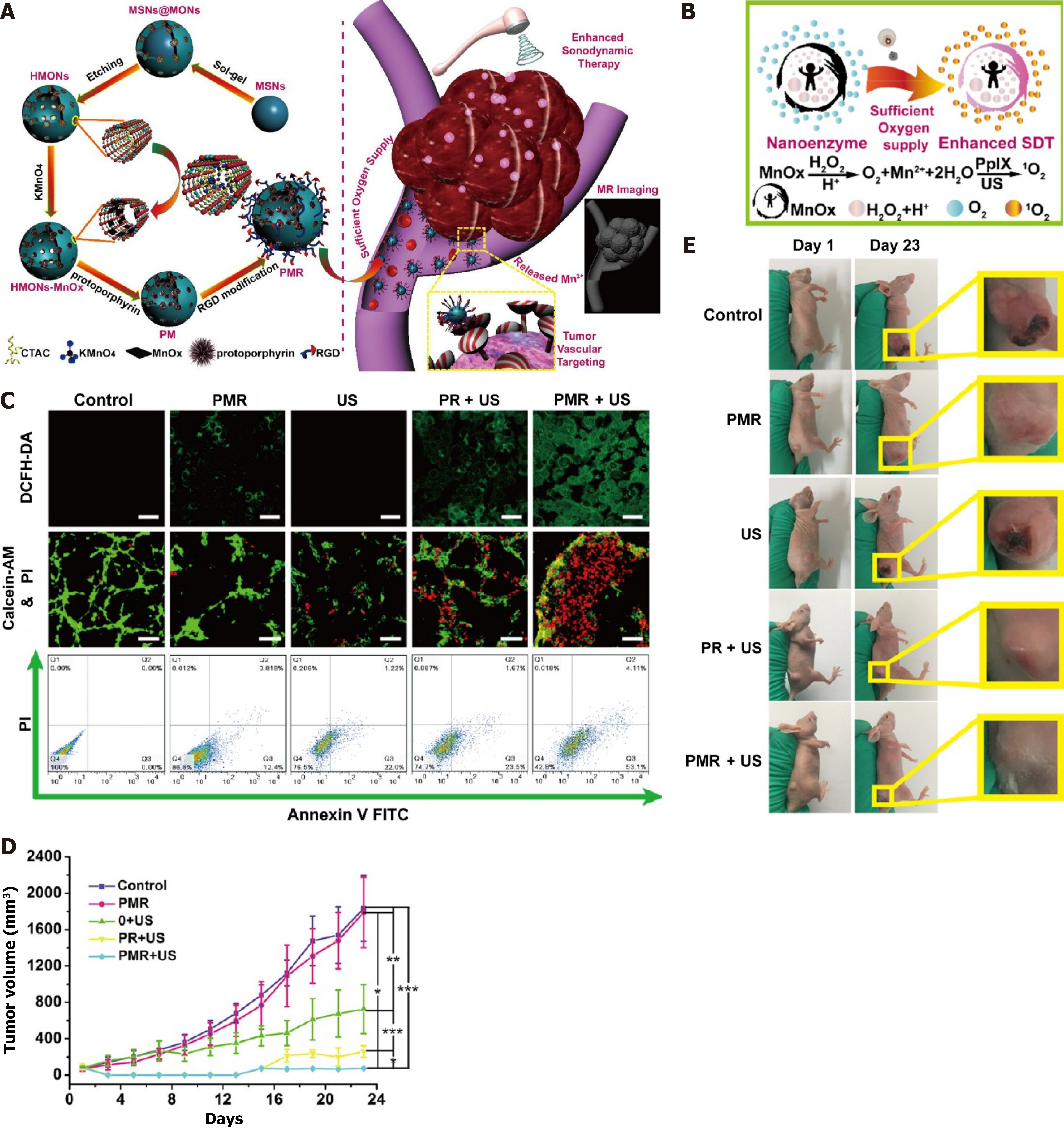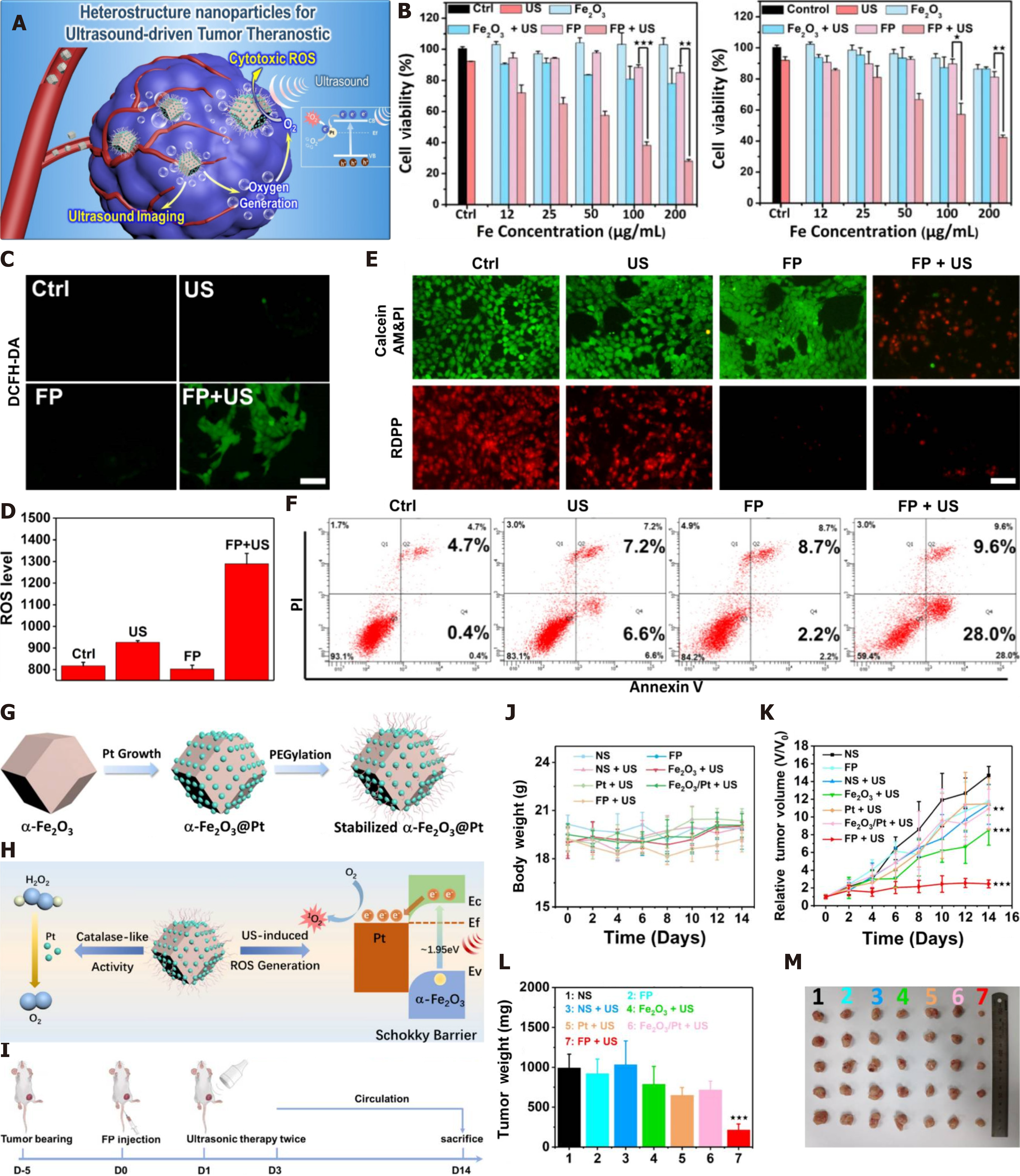Copyright
©The Author(s) 2023.
World J Clin Cases. Aug 6, 2023; 11(22): 5193-5203
Published online Aug 6, 2023. doi: 10.12998/wjcc.v11.i22.5193
Published online Aug 6, 2023. doi: 10.12998/wjcc.v11.i22.5193
Figure 1 Schematic diagram of the different mechanisms of reactive oxygen species generation.
A: Schematic diagram of the principle of sonodynamic therapy. Citation: Greenwald BD. Photodynamic therapy for esophageal cancer. Update. Chest Surg Clin N Am 2000; 10(3): 625-637. Copyright © 2011 American Cancer Society, Inc. Published by American Cancer Society, Inc; B: ROS generation by active piezoelectric catalysis. Piezoelectric materials in the electrostatic balance state release charge when under compressive stress and react with H2O to produce •OH, and O2 obtains negative charge to generate •O2−. Then Piezoelectric materials adsorb the charges from the surrounding electrolyte under reduced compressive stress, H2O loses negative electrons to generate ·OH, and O2 releases positive charge to generate •O2−. Citation: Wang Y, Wen X, Jia Y, Huang M, Wang F, Zhang X, Bai Y, Yuan G, Wang Y. Piezo-catalysis for nondestructive tooth whitening. Nat Commun 2020; 11(1): 1328. Copyright © The Author(s) 2020. Published by Springer Nature Limited.
Figure 2 Schematic representation of construction of PMR nanosonosensitizers and catalytic oxygen generation-enhanced sonodynamic therapy against cancer.
A: Detailed steps for preparation of PMR nanosonosensitizers; B: Scheme of MnOx was used as the catalase-like nanoenzyme for the generation of O2 and further generation of 1O2 under ultrasonic irradiation; C: Confocal laser scanning microscope observation of the production of ROS after various treatment and flow cytometry analysis of cancer cells apoptosis after various treatments; D: Tumor-volume changes after varied treatments; E: Corresponding photographic images of tumor at the end of different treatments. Citation: Zhu P, Chen Y, Shi J. Nanoenzyme-Augmented Cancer Sonodynamic Therapy by Catalytic Tumor Oxygenation. ACS Nano 2018; 12(4): 3780-3795. Copyright © 2018, American Chemical Society. Published by ACS Publication. SDT: Sonodynamic therapy; MnOx: Manganese oxide; H2O2: Hydrogen peroxide; US: Ultrasound; 1O2: Singlet oxygen; O2: Oxygen; PpIX: Protoporphyrin; PMR: PpIX@HMONs-MnOx-RGD; PR: Protoporphyrin.
Figure 3 Schematic representation of construction ofα-Fe2O3@Pt nanosonosensitizers and catalytic oxygen generation-enhanced SDT against cancer.
A, G: Schematic diagram of action mechanism of α-Fe2O3@Pt nanoparticles and synthetic method ofα- Fe2O3@Pt; B: The relative cell viability of Fe2O3 and α- Fe2O3@Pt with or without ultrasound under normoxic and hypoxic conditions; C and D: Qualitative and quantitative analysis of ROS by flow cytometer produced by α- Fe2O3@Pt; E: Fluorescence image stained with calcein AM (green, live cells) and PI (Propidium iodide, red, dead cells); F: The flow cytometer apoptosis assay staining with PI and Annexin-FTIC; H: Mechanism diagram of O2 and ROS produced by α- Fe2O3@Pt; I: Flow chart of in vivo study experiment; J-M: The variations of d body weight,relative tumor volume, tumor weight and tumor images of mice from different groups after sacrificing the mice on the 14th day. Citation: Zhang T, Zheng Q, Fu Y, Xie C, Fan G, Wang Y, Wu Y, Cai X, Han G, Li X. α-Fe2O3@Pt heterostructure particles to enable sonodynamic therapy with self-supplied O2 and imaging-guidance. J Nanobiotechnology 2021; 19(1): 358. Copyright © The Author(s) 2021. Published by BioMed Central Ltd. US: Ultrasound; Fe2O3: Ferric oxide; Pt: Platinum; FP:α-Fe2O3@Pt; 1O2: Singlet oxygen; O2: Oxygen; H2O2: Hydrogen peroxide; ROS: Reactive oxygen species.
- Citation: Dong HQ, Fu XF, Wang MY, Zhu J. Research progress on reactive oxygen species production mechanisms in tumor sonodynamic therapy. World J Clin Cases 2023; 11(22): 5193-5203
- URL: https://www.wjgnet.com/2307-8960/full/v11/i22/5193.htm
- DOI: https://dx.doi.org/10.12998/wjcc.v11.i22.5193











